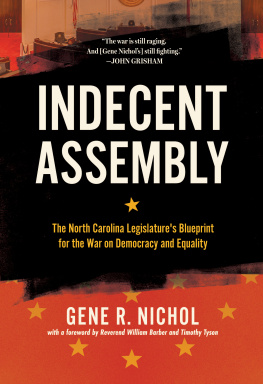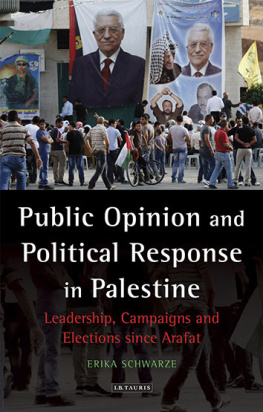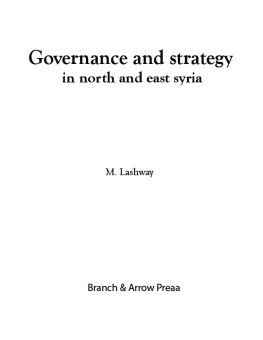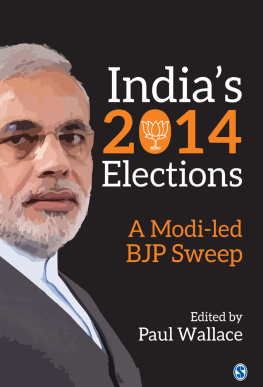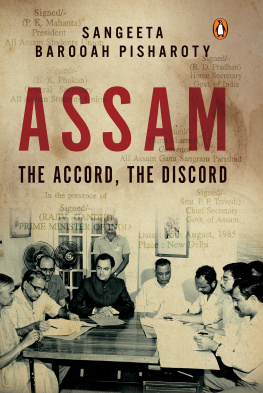Advance Praise for the Book
The BJPs unlikely conquest of the North-east was powered by the brilliant commitment of its younger workers, notably Rajat Sethi and Shubhrastha. This book isnt just a fine account of how this success was achieved, it is also a vital insight into the BJPs view of the North-east, so distinct from the conventional, established one so far.
Shekhar Gupta, chairman and editor-in-chief, ThePrint
This book will provide an insiders view of an election that the authors helped swing. In that sense, this participant observation of one of the characters and themes and planning behind the Assam elections will be any political junkies must-read.
Arnab Goswami, founder and editor-in-chief, Republic TV
This book is a significant attempt at understanding the historic assembly polls in Assam in 2016 in the context of the states contemporary politics and its recent tumultuous history. A good job by two political entrepreneurs.
Rajeev Bhattacharyya, senior journalist, and author, Rendezvous with Rebels: Journey to Meet Indias Most Wanted Men
A fine blend of history, electoral politics and the complex, unfolding narrative of Indias North-east.
Minhaz Merchant, biographer of Rajiv Gandhi and Aditya Birla
I had invested emotionally in the Assam campaign. This book is a lucid recall of the highs and lows of that journey. It flows like a river, taking the readers through the rich history of the North-east, meandering through the maze of complex regional dynamics, finally ebbing into the sea of an existential crisis caused by illegal migration in the region. A must-read for those interested in the subtle art of politics.
Himanta Biswa Sarma, cabinet minister, Assam government, and convener, North-East Democratic Alliance
LIST OF ABBREVIATIONS
| AASU | All Assam Students Union |
| ACMS | Assam Chah Mazdoor Sangh |
| AGP | Asom Gana Parishad |
| AIUDF | All-India United Democratic Front |
| APCC | Assam Pradesh Congress Committee (known as the Assam Provincial Congress Committee, pre-Independence) |
| BJP | Bharatiya Janata Party |
| BMS | Bharatiya Mazdoor Sangh |
| BPF | Bodoland Peoples Front |
| BTAD | Bodoland Territorial Areas District |
| ILP | Inner Line Permit |
| INTUC | Indian National Trade Union Congress |
| MLA | member of the Legislative Assembly |
| MP | member of Parliament |
| NDA | National Democratic Alliance |
| NEDA | North-East Democratic Alliance |
| RSS | Rashtriya Swayamsevak Sangh |
| SAG | South Asian Games |
| ULFA | United Liberation Front of Assam |
| UMF | United Minorities Front |
Foreword
As a young Rashtriya Swayamsevak Sangh (RSS) activist, I would read and hear about two regions of the country very oftenJammu and Kashmir and the North-east of India. It was always in the context of activities of anti-national forces and terrorist groups in these regions and how they were posing a threat to Indias territorial integrity. As I climbed up the ladder in the organization, I was able to better appreciate the challenges and threats from the region. I became a member of the drafting committee that would pass the resolutions during the annual national meets of the RSS, at least three on an average in a year. These resolutions highlight the ideological priorities of the organization and offer guidelines to the swayamsevaks to work towards the goals decided upon in the annual meetings. Not a single year passed without concerns being raised within the RSS over the issues in these regions.
Jammu and Kashmir was, of course, the dominant theme, but the North-east was not far behind. Over a period of a decade I have drafted at least four resolutions on various issues in the region, including on infiltration, border fencing, the Chakmas, the Riangs, the United Liberation Front of Assam (ULFA) and on Naga issues. National-level responsibility in the organization has provided me the opportunity to visit the North-east several times. During one such visit, I even travelled to the remote TripuraMizoram border to meet about 50,000 Riang refugees who had been forced to flee their homes in Mizoram in the mid-1990s.
Coincidentally, when I joined the Bharatiya Janata Party (BJP) in 2014 and became its general secretary, the regions entrusted to me were Jammu and Kashmir and the North-east. The BJP had little or no presence in these areas. The North-east especially, with it extreme diversity, has always eluded a nationalist and integrationist party like the BJP. So the assignment was naturally challenging.
The North-east is geographically one region but it is hardly homogenous. Each state has its own peculiar characteristics. Within each state too one encounters vast diversity. Physical distance from the political capital of the country, a general neglect of and ignorance about the region are issues as well. One has to acknowledge and respect this diversity in order to succeed in influencing the people. I believe that grooming diverse local leadership is the key to success for any political party in this region.
One wishing to work in or for the North-east must learn to respect the diversity of this region. Even in the desire to look and sound national, one should not disrespect or discard this diversity and uniqueness. This one lesson helped us enormously when we faced the first election in Assam in early 2016. Of course, we had Modijis popularity as a big weapon to use in the elections, but the political and economic conditions in the country at the time were not very encouraging for the BJP. The party had endured two successive defeats in the Delhi and Bihar assembly elections. It also did not have much presence in the states that were going to polls together along with AssamKerala, Tamil Nadu and West Bengal. There were other issues too that were working against the party then, such as the fact that dal was being sold in excess of Rs 200.
Yet, the BJP had been able to do exceedingly well in Assam and secured sixty seats in the 126-member assembly. Together with its allies, it had eighty-seven members, which is more than two-thirds majority. A BJPAsom Gana Parishad (AGP)Bodoland Peoples Front (BPF) coalition government led by Sarbananda Sonowal has since been put in place and is running the state successfully.
Looking back, I feel that two or three important factors helped us win this first major state in the North-east for the BJP. We were successful in forging a rainbow coalition with the AGP and the BPF, thereby giving the people a feeling that we were capable of unseating the fifteen-year-old Congress regime. The election was largely centred around local concerns, focusing on the misdeeds and failures of the Assam Congress government under chief minister Tarun Gogoi. We didnt allow the debate to turn to national issues. Projecting Sarbananda Sonowal, a soft-spoken tribal leader, as the chief ministerial candidate too helped us in a big way. The induction of Congress dissident Himanta Biswa Sarma, who enjoyed huge popularity and is known as an organizer and doer, was also a benefit. But most importantly, through the campaign, we did not make a single mistake that would have given the Congress any scope to gain political or electoral mileage.



